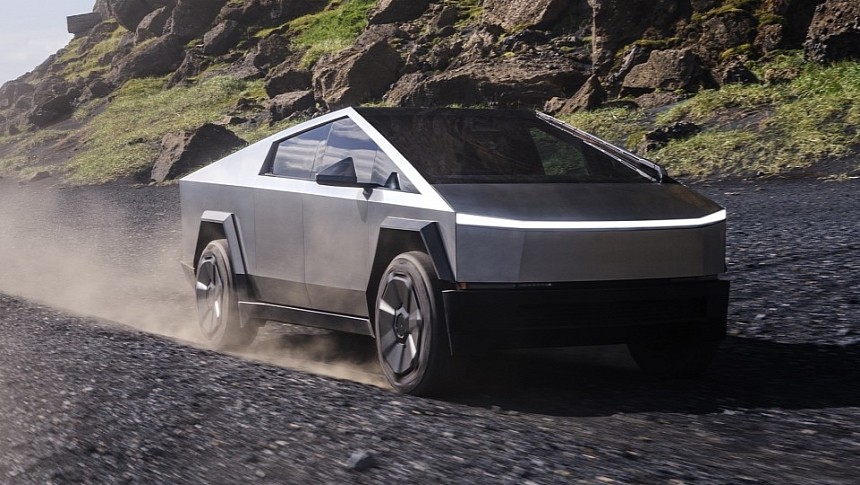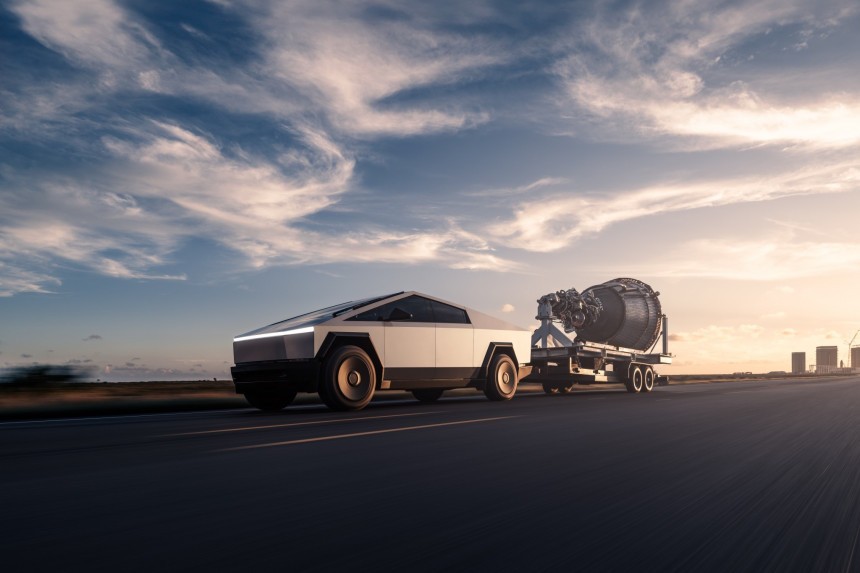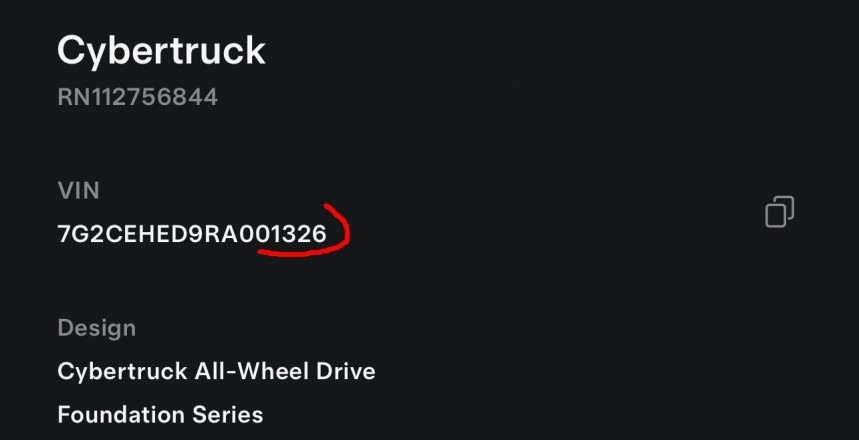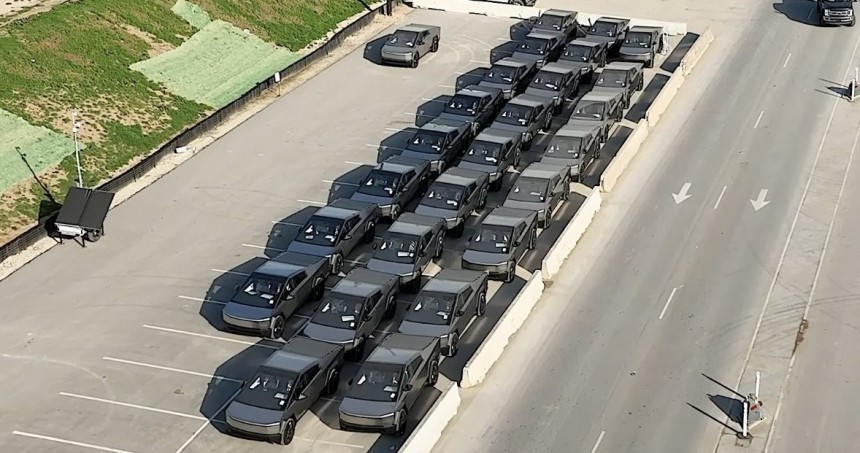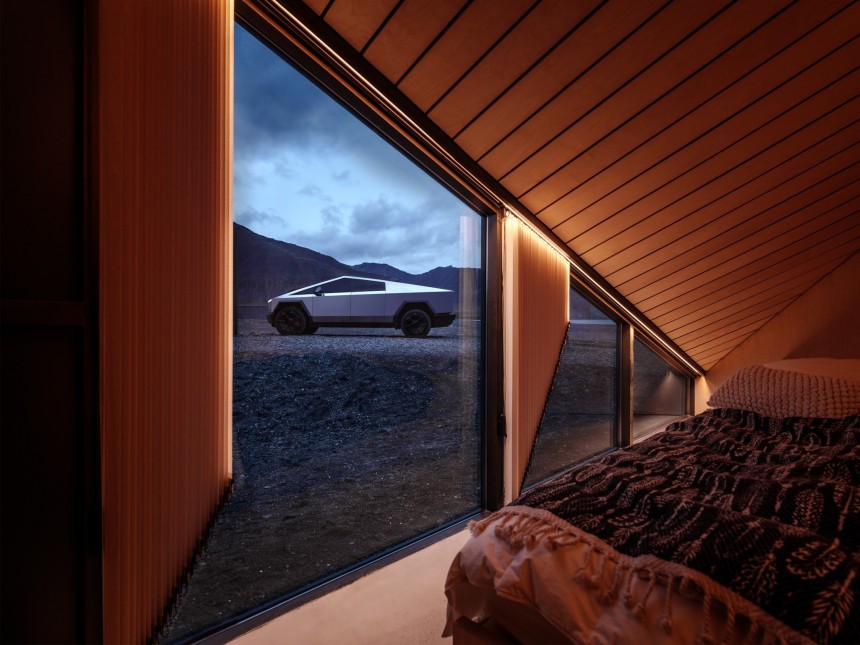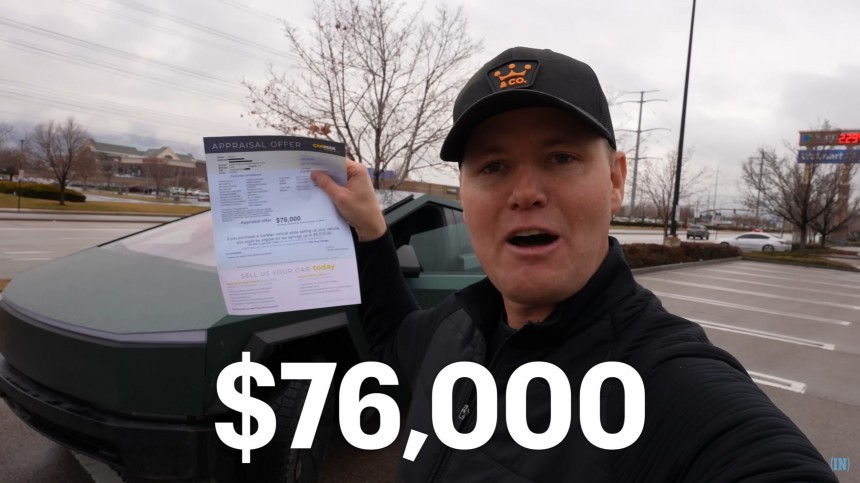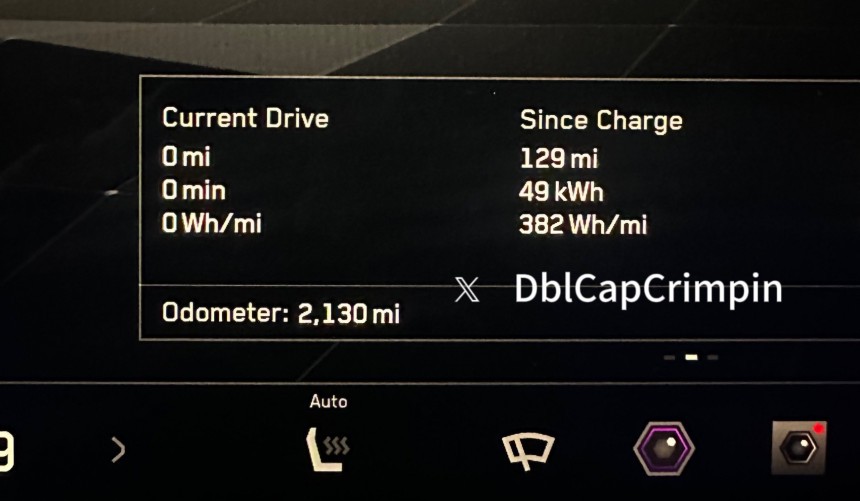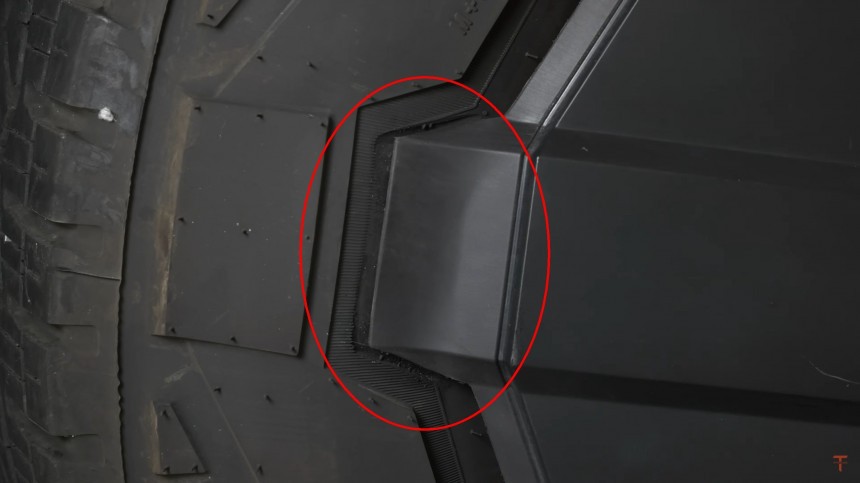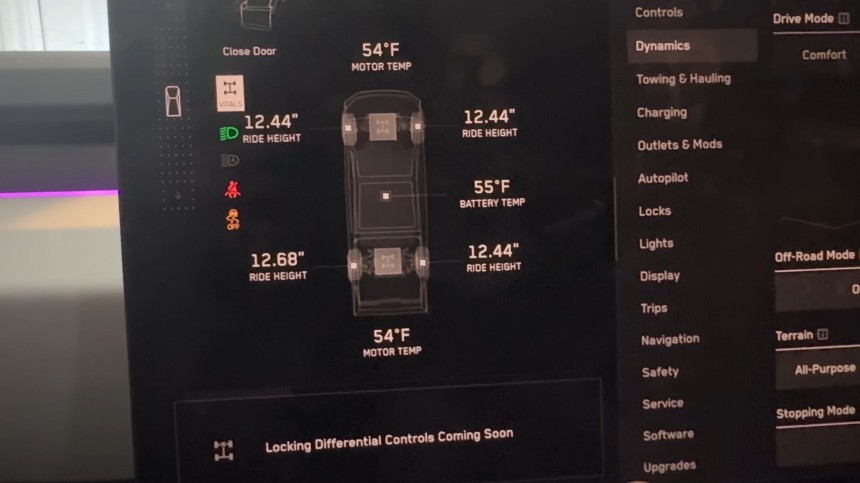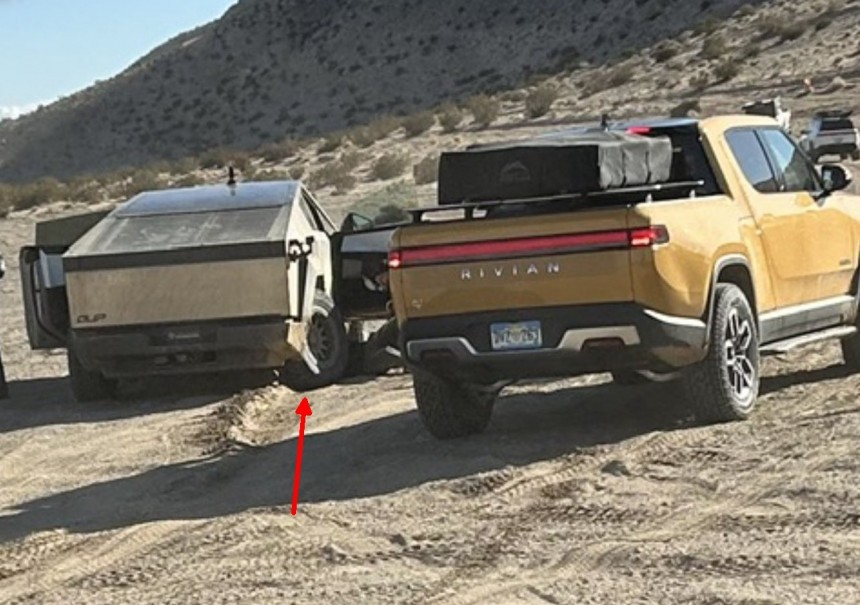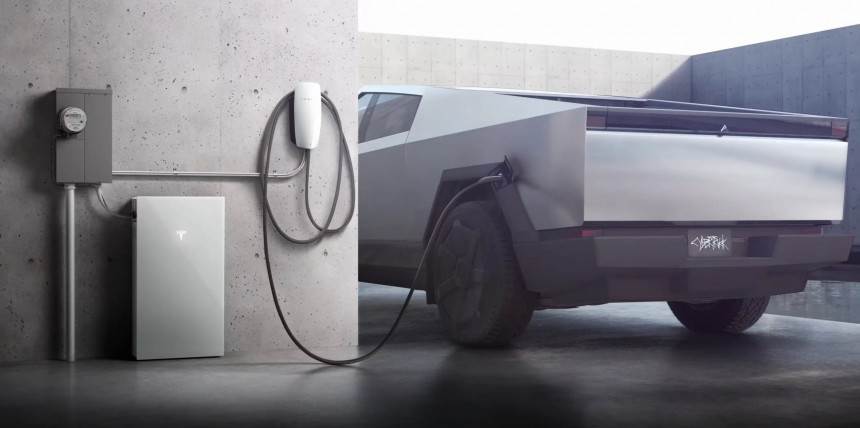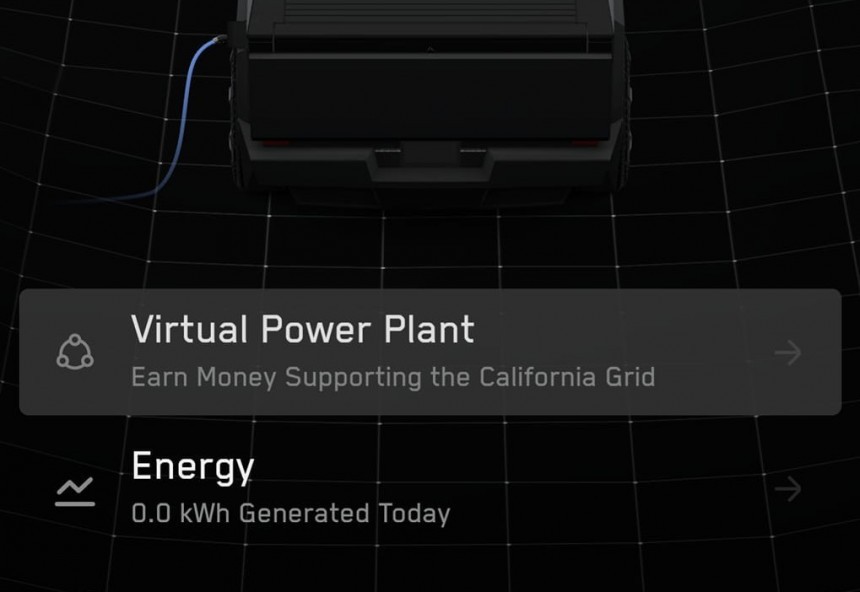Two months have passed since the first Cybertruck units were delivered to their owners. Although there are rough estimates that Tesla has produced more than a thousand units since then, the electric pickup truck still hides some secrets Tesla omitted to discuss. As people started bumping into them, we now know more about the Cybertruck than Tesla wanted to tell.
Tesla has a long history of overpromising and underdelivering on its products, and people got used to that. Whenever the EV maker launched a new model and promised a timeline, people expected delays. Although late, these products arrived nevertheless, even though many skeptics were convinced they would never enter production. It happened with the Model 3, Tesla Full Self-Driving, the Cybertruck, and, lately, the next-generation EV platform.
The Cybertruck was a particular case because Elon Musk kept promising new things as years passed. On the one hand, this put pressure on the engineers to implement every feature Musk dreamed of. On the other hand, this delayed the project more than anyone thought. As time passed, the Cybertruck became almost mythological, with incredible features unlike anything ever produced on Earth by humans. And it also got something of a dream, which made some think it might never enter production.
Alas, it did, after Tesla tortured its fans for more than a year with prototype sightings in California and, later, throughout the US. Given the truck's design, with straight angles and almost no curves, covering it in camo would not hide anything. The Cybertruck looks the same, covered or naked, exposing its beautiful stainless steel skin. The first camo wrap Tesla attempted as a joke turned out to be a lucrative business, as new owners wanted to personalize the shiny chunk of metal they paid for.
The second Cybertruck launch event, or Delivery Day, as Tesla called it, proved almost as controversial as the first one. Instead of a broken window caused by von Holzhausen's metal ball, we've had a baseball gently lobbed at the said window, unlikely to cause any damage. Tesla was so proud of this joke that it included a picture in the official press kit.
But that was not the end of the controversies. Tesla failed to deliver on the promised specifications, with a lower range than initially advertised. Instead of 500 miles (805 km) of range, the most powerful Cybertruck variant, the Cybertruck, could barely go 320 miles (515 km). Opting for the dual-motor AWD trim would be more sensible, giving the longest range of 340 miles (547 km).
To make up for this shortcoming, Tesla announced a "battery range extender" that can be installed in the truck's bed and add up to 130 miles (210 km) of range. Aside from the fact that it's not available to purchase yet, the downside is that it takes up almost half the bed space. This put potential buyers in a predicament. They will need the range extender to use the Cybertruck for towing. But then, the Cybertruck is no good for any truck work. Installing the range extender is no trivial task, either, so taking it off would not be possible on the fly as your needs change.
These are only a few unknown things about the Cybertruck that people would have liked to know before placing an order. Others were only discovered as new owners bumped into them, and they probably wished they had known about them before. That's why I collected as many less-known things as possible about the Cybertruck. I'm sure there are more, so feel free to add your questions (or answers, if you have them) in the Comments section below.
More important than how many Cybertrucks per year Tesla can produce in ideal conditions is how many it currently produces. Tesla enthusiast Joe Tegtmeyer thinks we are at a run rate of about 250 units per week, which equals a 13,000-unit annualized production. However, based on current observations, Tesla might be ramping up production at an impressive pace, which means Tesla could triple output in March.
As more 4680 cell production lines start operations at Giga Texas in June and September, respectively, we could see a run rate of more than 132,000 units per year by December 2024. Adding a second shift in the second half of the year will also allow Tesla to exceed the current theoretical production capacity of 125,000 units per year.
Tesla has issued about 1,500 VINs to people who ordered a Foundation Series Cybertruck. Not all of them have been delivered, but rough estimates indicate that the number might hover around 1,300 deliveries. Considering we're two months past Delivery Day, this appears to confirm the current run rate of between 250-375 units per week.
For once, the Foundation Series has all the extras in the configurator, including Full Self-Driving and free Supercharging for the life of the vehicle. Then, there is a comprehensive set of accessories included in the package. You can decide whether the $20,000 premium is worth paying based on how much you want these accessories and extras. Then, Tesla can laser-etch a Foundation Series badge on the side of the truck.
Early rumors indicated that Tesla might offer 1,000 Foundation Series units, although this number is now clearly inaccurate. We've already moved past 1,000 Cybertruck deliveries, and Tesla still accepts orders for the supposedly limited series. Based on people's discussions with Tesla representatives, the actual number might be a lot higher than that, at about 20,000 units. If true, Tesla might open the order book for regular Cybsrtrucks sometime in November.
That's right, you're not sent to the back of the queue, as some feared, with zero chances of getting a Cybertruck in the next ten years. You start fresh as if the Foundation Series never existed. Still, a new question popped out, especially as people might need to reconsider their choices. Say you get carried away and place a Foundation Series order when invited, but then you realize $100,000 is more than you can comfortably pay without being thrown out of the house by your significant other.
Well, since some people have already had to confront such a situation, we know what happened in this case. Based on people's experience, putting your Cybertruck order on hold is okay. This is the same as refusing the invitation for a Foundation Series, meaning you will keep your place in line for a non-Foundation Series truck. We now know how long this would take, and it's not much different from the estimate above: December 2024. According to the Tesla app, this is "the earliest availability," so take that with a grain of salt.
Tesla thought of it, too, and came up with a contract for the Foundation Series owners to prevent them from selling the Cybertruck in the first year after delivery. According to the contract terms, you can only sell your truck back to Tesla, although it is unclear how much you get for it. If you sell it to a third party, you'd owe Tesla $50,000 or whatever you gain from the sale if it's more than $50,000. This effectively prevents reselling the Cybertruck for a profit, as Tesla will get all the benefits.
Still, things get a little more complicated if you don't intend to make a quick buck and want to get rid of the Cybertruck because you don't like it. In a recent video by "What's Inside? Family" YouTube channel, we see the first Cybertruck appraised at CarMax. Those who hoped to make a profit from selling the Cybertruck (or at least not take a loss) might be in shock. The Cybertruck is only worth $76,000 to CarMax, which is quite low for an almost-new, $100,000 truck with 3,000 miles on the odometer.
Although there might be people willing to pay a lot more for a Cybertruck, the no-resale clause Tesla put into the sales contract makes selling the Cybertruck a bad deal anyway. Some clever folks discovered a more lucrative way to get your money back, and then some: renting it on Turo or other rental platforms. At up to $1,000 a day, you can cover the payments for the truck in less than a year and still own it at the end of the period.
This is not necessarily a Cybertruck problem, though. Remember, Tesla stated the EPA range with all-season tires, which are still unavailable to order. All those reporting on the real-world range tested the Cybertruck's range with the standard tires, which for now are All-Terrain tires, known to affect efficiency.
However, some Cybertruck owners are satisfied with the range they get from the Cybertruck. One of the early owners reported a 382 Wh/mile energy consumption on a "heavy normal day." This equals 322 miles of range, just about as much as Tesla promised for the Cyberbeast. This figure was attained with the All-Terrain tires, no aero caps, tonneau closed, and the truck in Beast mode. During the 129-mile drive, they did "a few 0-60 runs" and at least 50 miles on the highway at over 65 mph.
The aero wheel covers were one of the signature features of the Cybertruck, so many people are saddened to see them gone. The covers have a unique design, matching the tires' bespoke pattern. They have seven spokes, each going into a recess in the tire sidewall. This design helps with aerodynamic efficiency, with Tesla claiming that the aero covers improve efficiency by 5-10% compared to the naked wheel.
However, Tesla discovered that the cover's spokes, which have tips made of rubber, would rub against the tire sidewall, causing accelerated wear and tear. That's why it intends to redesign the wheel covers to eliminate the wear problem. Hopefully, this will not affect the iconic wheel design, which has amazed people since Tesla made the first design sketches public.
The first time this shortcoming got our attention was when a Release-Candidate Cybertruck had to be rescued by a Ford truck after sliding down a snowy incline at Corral Hallow OHV in December. Without being able to lock the rear wheels, the Cybertruck could not climb back on its own. Since that was a release-candidate prototype, people forgave the incomplete software and the lack of lockers. However, Tesla still hasn't ready the software for the production vehicles delivered to paying customers.
A few days ago, one Cybertruck owner shared on his YouTube channel VoyageATX that the truck still states "Locking Differential Controls Coming Soon" when you try to engage them in the Off-Road mode. That's a bummer for anyone wanting to have fun on the trails with his Cybertruck. Instead of fun, they'll only get frustration and embarrassment.
I'm sure we already have headlines blaming this incident on Tesla and the Cybertruck design, but things are not what they seem. First, King of Hammers is known for being extremely brutal on cars, and broken parts are commonplace during the event. The Cybertruck still held well for two days before the bolt gave up.
Another thing to remember is that the UP Cybertruck did not have a stock suspension. According to the UP explanation, the truck was fitted with front and rear quick-disconnect sway bar end links, among other modifications. This may or may not have contributed to the incident. However, what is true is that the UP team was there to push the truck and its custom-made components to the limits and gain as much experience as possible from this event.
There are differences depending on which trim you ordered. For the Foundation Series Cyberbeast, the PowerShare gateway, the compatible wall charger, and the installation costs are included in the price. If you have the Foundation Series AWD Cybertruck, you must pay for the installation. Hardware is shipped to the installer once you accept the price quote and an install date is scheduled. You also need to be accepted by the utility company.
For those with a Cybertruck AWD, the installation prices vary depending on the work needed. Some reported about $4,000, others over $5,500, so your mileage may vary. However, there are also cases when PowerShare installation is not possible for various reasons. In this case, Tesla offers to compensate for the free installation and Powershare components with six months of free Supercharging.
If you're lucky and get your PowerShare hardware installed, you'll be happy to know that the Cybertruck can provide up to 11 kW of continuous power during an outage. If you need that much power, this is about ten hours of backup power from a full battery. The power draw is much lower in real-world scenarios so that the battery could last more than a day. If you have solar, the PowerShare system plays nice with it, extending the backup time to several days.
One notable example is the lack of load shifting. This Powerwall feature avoids high rate times by powering the house from the battery during those periods. The Powerwall is recharged when the rates are more favorable, thus lowering the electricity bill. So far, utility companies state that the PowerShare can be used only when the home is disconnected from the grid, in an outage, or with manual disconnect. This makes it more of an emergency solution than a regular one.
The good news is that you can still participate in Virtual Power Plant events in some states, helping stabilize the grid and earn some money in the process. However, just because you can doesn't mean you should. Using your Cybertruck's battery as a backup power source can accelerate wear and tear. Considering the prices, you'll be better off replacing one or two Powerwalls than the truck's battery pack.
The Cybertruck was a particular case because Elon Musk kept promising new things as years passed. On the one hand, this put pressure on the engineers to implement every feature Musk dreamed of. On the other hand, this delayed the project more than anyone thought. As time passed, the Cybertruck became almost mythological, with incredible features unlike anything ever produced on Earth by humans. And it also got something of a dream, which made some think it might never enter production.
Alas, it did, after Tesla tortured its fans for more than a year with prototype sightings in California and, later, throughout the US. Given the truck's design, with straight angles and almost no curves, covering it in camo would not hide anything. The Cybertruck looks the same, covered or naked, exposing its beautiful stainless steel skin. The first camo wrap Tesla attempted as a joke turned out to be a lucrative business, as new owners wanted to personalize the shiny chunk of metal they paid for.
The second Cybertruck launch event, or Delivery Day, as Tesla called it, proved almost as controversial as the first one. Instead of a broken window caused by von Holzhausen's metal ball, we've had a baseball gently lobbed at the said window, unlikely to cause any damage. Tesla was so proud of this joke that it included a picture in the official press kit.
To make up for this shortcoming, Tesla announced a "battery range extender" that can be installed in the truck's bed and add up to 130 miles (210 km) of range. Aside from the fact that it's not available to purchase yet, the downside is that it takes up almost half the bed space. This put potential buyers in a predicament. They will need the range extender to use the Cybertruck for towing. But then, the Cybertruck is no good for any truck work. Installing the range extender is no trivial task, either, so taking it off would not be possible on the fly as your needs change.
These are only a few unknown things about the Cybertruck that people would have liked to know before placing an order. Others were only discovered as new owners bumped into them, and they probably wished they had known about them before. That's why I collected as many less-known things as possible about the Cybertruck. I'm sure there are more, so feel free to add your questions (or answers, if you have them) in the Comments section below.
How many Cybertrucks have been produced?
Tesla has been secretive about the Cybertruck production, although it did offer an installed capacity estimate in the Q4 2023 shareholder deck. According to that, the Cybertruck production line at Giga Texas can theoretically produce over 125,000 units per year. However, that is not very relevant, as many factors can affect this capacity. For instance, the 4680 battery cell availability could be one bottleneck, although Tesla executives denied it.More important than how many Cybertrucks per year Tesla can produce in ideal conditions is how many it currently produces. Tesla enthusiast Joe Tegtmeyer thinks we are at a run rate of about 250 units per week, which equals a 13,000-unit annualized production. However, based on current observations, Tesla might be ramping up production at an impressive pace, which means Tesla could triple output in March.
Tesla has issued about 1,500 VINs to people who ordered a Foundation Series Cybertruck. Not all of them have been delivered, but rough estimates indicate that the number might hover around 1,300 deliveries. Considering we're two months past Delivery Day, this appears to confirm the current run rate of between 250-375 units per week.
How many Foundation Series Cybertrucks will be offered?
This is a recurring question for people unwilling to pay $20,000 extra for a Foundation Series Cybertruck. If I were Tesla, I would sell Foundation Series units for as long as I could find people willing to pay the premium. There's no indication that Tesla is not doing the same. After all, it didn't commit to a specific number, and the modifications needed to turn a regular Cybertruck into a Foundation Series are minimal.For once, the Foundation Series has all the extras in the configurator, including Full Self-Driving and free Supercharging for the life of the vehicle. Then, there is a comprehensive set of accessories included in the package. You can decide whether the $20,000 premium is worth paying based on how much you want these accessories and extras. Then, Tesla can laser-etch a Foundation Series badge on the side of the truck.
What happens when you put your order on hold?
This is a tricky question, and people have asked it in various forms since the first deliveries started. At first, they wanted to know what would happen if you were invited to order the Foundation Series and were unwilling to pay the $20,000 premium for a Foundation Series Cybertruck. Tesla offered an answer, saying that nothing bad would happen. Whoever wants a Foundation Series Cybertruck can order one when invited. If you refuse, you keep your place in line for the regular version of the truck when Tesla starts deliveries.That's right, you're not sent to the back of the queue, as some feared, with zero chances of getting a Cybertruck in the next ten years. You start fresh as if the Foundation Series never existed. Still, a new question popped out, especially as people might need to reconsider their choices. Say you get carried away and place a Foundation Series order when invited, but then you realize $100,000 is more than you can comfortably pay without being thrown out of the house by your significant other.
How much can you get if you sell your Cybertruck?
This has been one of the hottest questions people asked, even before the Cybertruck started deliveries. People placed many reservations for Tesla's electric pickup in 2019, thinking they could sell some for a profit once deliveries would start. Given the refundable $100 deposit, that was not a problem. When the car crunch of 2021-2022 started, and everyone was flipping new vehicles like crazy, those early reservation holders were already counting the money they'd make by selling their Cybertrucks.Tesla thought of it, too, and came up with a contract for the Foundation Series owners to prevent them from selling the Cybertruck in the first year after delivery. According to the contract terms, you can only sell your truck back to Tesla, although it is unclear how much you get for it. If you sell it to a third party, you'd owe Tesla $50,000 or whatever you gain from the sale if it's more than $50,000. This effectively prevents reselling the Cybertruck for a profit, as Tesla will get all the benefits.
Although there might be people willing to pay a lot more for a Cybertruck, the no-resale clause Tesla put into the sales contract makes selling the Cybertruck a bad deal anyway. Some clever folks discovered a more lucrative way to get your money back, and then some: renting it on Turo or other rental platforms. At up to $1,000 a day, you can cover the payments for the truck in less than a year and still own it at the end of the period.
Is the range as bad as some people say?
As we've said above, one of the most controversial Cybertruck features was its range. People who bought one had mixed experiences based on their use-case scenario and driving style. However, reaching the EPA-estimated range was difficult for most of them. This made many think that Tesla was too optimistic when reporting the range, something it has also been accused of doing with other models in the lineup.This is not necessarily a Cybertruck problem, though. Remember, Tesla stated the EPA range with all-season tires, which are still unavailable to order. All those reporting on the real-world range tested the Cybertruck's range with the standard tires, which for now are All-Terrain tires, known to affect efficiency.
Wheel cover issue
Since we've been talking about the Cybertruck wheels, it appears that Tesla recently discovered an issue with them. More specifically, the wheel covers have been found to cause unusual wear to the tires' sidewalls, so Tesla decided to scrap them. The Cybertrucks are delivered with no wheel cover, and new owners are promised to get them as soon as new ones are available.The aero wheel covers were one of the signature features of the Cybertruck, so many people are saddened to see them gone. The covers have a unique design, matching the tires' bespoke pattern. They have seven spokes, each going into a recess in the tire sidewall. This design helps with aerodynamic efficiency, with Tesla claiming that the aero covers improve efficiency by 5-10% compared to the naked wheel.
Locking differentials are still not available
Tesla announced that the Cybertruck would feature an electromechanical differential lock on the front drive unit on the AWD model and the Cyberbeast. The AWD model also comes with a lockable differential on the rear axle. In contrast, the Cyberbeast uses its two rear motors for torque vectoring. This means that it relies on software to simulate a lockable rear differential.The first time this shortcoming got our attention was when a Release-Candidate Cybertruck had to be rescued by a Ford truck after sliding down a snowy incline at Corral Hallow OHV in December. Without being able to lock the rear wheels, the Cybertruck could not climb back on its own. Since that was a release-candidate prototype, people forgave the incomplete software and the lack of lockers. However, Tesla still hasn't ready the software for the production vehicles delivered to paying customers.
Rear-wheel steering might not be that sturdy
As I wrote this article, disturbing pictures were shared by attendees at King of Hammers, where Unplugged Performance was playing with their UP Invincible Cybertruck. Apparently, the team broke a rear wheel while driving it hard on the dunes. The Unplugged Performance team explained in a post on X that they pushed the Cybertruck to its limits, which eventually caused a bolt to break on the second day.I'm sure we already have headlines blaming this incident on Tesla and the Cybertruck design, but things are not what they seem. First, King of Hammers is known for being extremely brutal on cars, and broken parts are commonplace during the event. The Cybertruck still held well for two days before the bolt gave up.
Powershare installation details
One of the big unknowns of owning a Cybertruck was how to get your house ready for the PowerShare feature. This allows a Cybertruck to power your home in emergencies, effectively turning the truck into a huge Powerwall on wheels. Well, not entirely, because there are some limitations, which I'll explain below.There are differences depending on which trim you ordered. For the Foundation Series Cyberbeast, the PowerShare gateway, the compatible wall charger, and the installation costs are included in the price. If you have the Foundation Series AWD Cybertruck, you must pay for the installation. Hardware is shipped to the installer once you accept the price quote and an install date is scheduled. You also need to be accepted by the utility company.
For those with a Cybertruck AWD, the installation prices vary depending on the work needed. Some reported about $4,000, others over $5,500, so your mileage may vary. However, there are also cases when PowerShare installation is not possible for various reasons. In this case, Tesla offers to compensate for the free installation and Powershare components with six months of free Supercharging.
If you're lucky and get your PowerShare hardware installed, you'll be happy to know that the Cybertruck can provide up to 11 kW of continuous power during an outage. If you need that much power, this is about ten hours of backup power from a full battery. The power draw is much lower in real-world scenarios so that the battery could last more than a day. If you have solar, the PowerShare system plays nice with it, extending the backup time to several days.
PowerShare limitations
As I've said above, there are limitations to using the Cybertruck as a power backup source instead of a Powerwall storage battery. It does have a much bigger battery capacity, at 123 kWh instead of 13.5 kWh for one Powerwall battery. However, the Powerwall has more advanced functions and still offers the best backup solution, especially if you have solar panels.The good news is that you can still participate in Virtual Power Plant events in some states, helping stabilize the grid and earn some money in the process. However, just because you can doesn't mean you should. Using your Cybertruck's battery as a backup power source can accelerate wear and tear. Considering the prices, you'll be better off replacing one or two Powerwalls than the truck's battery pack.
